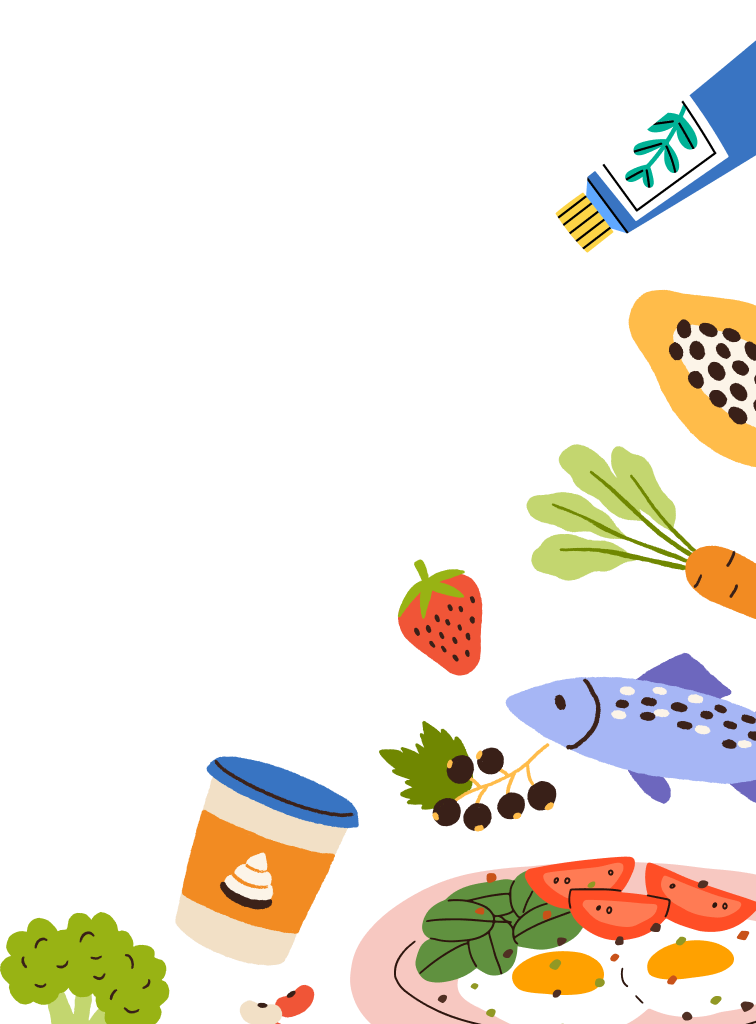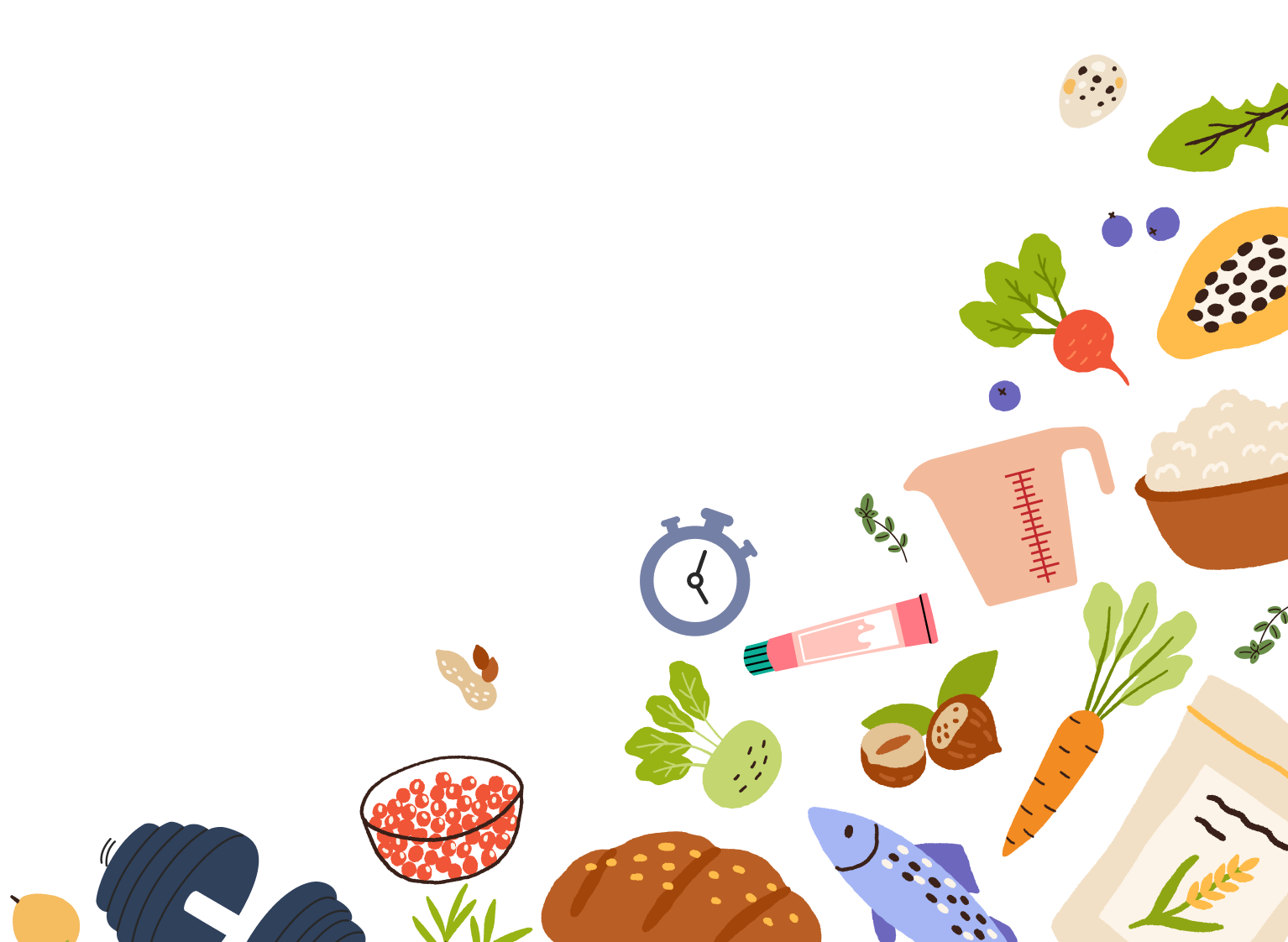Protein Power: Mastering Your Intake for Optimal Health
Are you a protein pro? Check your knowledge in our primer, packed with pointers to level your protein power.
Protein is an essential macronutrient. But there’s more to optimizing your protein intake than simply eating more protein. Here’s what you need to know about protein sources, the amounts needed for good health, and how to incorporate protein into your diet.
Understanding Protein
Protein is crucial for good health because it has many bodily roles. There really is no substitute for protein. Most of us recall from school that amino acids are called the “building blocks” of proteins. Proteins are long amino acid chains; when we eat protein foods, these chains are broken down in the digestive tract. This creates an amino acid “pool” or collection in the body, from which it can draw and piece together new proteins to repair body structures, make new ones, and perform other protein-dependent jobs as needed.
Protein’s Roles In The Body
Most people think of muscle-building as a primary role of protein/amino acids, and repairing and building muscle is certainly a vital role. However, there are many other functions for amino acids. Some of the amino acids in the pool are used for other jobs, such as:
-
Making neurotransmitters, the chemical messengers in the body and brain
-
Helping with appetite and blood sugar regulation
-
Maintaining pH level in the blood and body fluids
-
Managing fluid balance
-
Creating antibodies for improved immunity
-
Storing and moving oxygen around the body via hemoglobin and myoglobin
-
Synthesizing enzymes and hormones
-
For blood clotting
-
As a last-resort energy source
Complete vs. Incomplete Proteins
A healthy diet includes both plant sources and animal sources of protein. All proteins are made up of different combinations of 20 amino acids. Eleven of the amino acids are considered non-essential, meaning our bodies can synthesize them. The other nine are essential amino acids, so they must come from the diet.
The foods we eat may be considered complete proteins or incomplete proteins, depending on their amino acid content.
-
Complete proteins - contain all nine essential amino acids in adequate amounts. Animal foods are the primary source of complete proteins, but there are a few vegetable sources, including soy foods, quinoa, hemp, chia seeds, and buckwheat.
-
Incomplete proteins - are plant-based and contain only some of the essential amino acids or contain too little of one (or more) essential amino acids. The amino acid present in the lowest proportion relative to an individual’s needs is called a limiting amino acid.
Complementary Proteins
Combining two or more incomplete protein foods in order to provide all the essential amino acids is sometimes described as creating complementary proteins. Examples of complementary :
-
Legumes with nuts/seeds (hummus on a whole-grain pita)
-
Grains with nuts (like a peanut butter sandwich)
-
Grains with legumes (such as rice and beans or corn and beans)
It used to be thought that eating complementary proteins within each meal was necessary in order to ensure nutritional adequacy. It’s now known that specific efforts to pair incomplete proteins aren’t necessary. If you aren’t eating animal foods, you can still meet your protein needs if you’re consuming some of the complete plant protein foods and getting a variety of incomplete plant proteins each day.
What Is a High-Quality Protein?
Not all proteins are created equally. Although all proteins provide nitrogen from their amino acids, some protein sources are considered higher in quality than others. A high-quality protein food has several characteristics:
-
It’s readily digestible
-
It’s a concentrated protein source
-
Provides adequate levels of the nine essential amino acids to maintain the amino acid pool
Sources of High-Quality Protein
High-quality proteins are complete proteins. And in general, our bodies have an easier time digesting and absorbing amino acids from animal-based protein sources. High-quality protein foods include:
-
Beef and pork
-
Fish
-
Poultry
-
Eggs
-
Dairy products
-
Although not animal-derived, soy foods such as tofu, soy milk, and edamame also provide high-quality protein.
How Much Protein Do You Need?
Most Americans get enough protein in their diets to prevent outright deficiency. The Recommended Dietary Allowance of protein is 0.8g/kg body weight (0.36g/lb) for sedentary individuals. If you’re pregnant or lactating, you’ll need an extra 10-15g of protein per day. This general recommendation has been the same for many years.
A growing body of research indicates the current protein recommendations may be too low, especially for specific groups. For example, individuals beginning in midlife may need slightly higher amounts to help maintain muscle mass and promote healthy aging. In addition, higher levels of protein consumption appear to benefit athletes who perform intensive resistance exercise, are actively trying to add body muscle, or those trying to decrease body fat while retaining muscle (also known as body recomposition). Because protein is the most satiating macronutrient, consuming higher amounts of protein is also helpful for people trying to manage their weight.
Finally, people with certain health conditions are at increased risk of protein deficiency. These conditions may include:
-
certain genetic conditions and autoimmune diseases
-
eating disorders
-
gastric bypass surgery
-
advanced cancer
How Much Protein Is Too Much?
Protein consumption as high as 35% of daily calorie intake appears safe, although a tolerable upper limit for protein hasn’t been established. Research indicates that getting 2-2.5g protein/kg body weight (0.9g/pound) in the long term is considered safe for most adults, although routinely getting more than that may cause problems—some of them serious. Gastrointestinal issues, dehydration, accumulation of ammonia in the body, headaches, fatigue, increased risk of cardiovascular disease, and other conditions may arise with long-term high protein consumption. Those with gout and liver and kidney disease should also avoid excess protein.
Because individual protein needs vary, getting personalized recommendations from a Registered Dietitian is best.
Planning To Get Protein Into Your Diet
It’s not difficult to get the protein you need, but it is helpful to plan ahead a little to reap the most benefits from it. Here are a few tips:
-
Spread your protein throughout the day. Research suggests that spreading your protein intake across all your meals helps the body absorb and utilize the protein more efficiently. To do this, divide your total protein goal (in grams) between your three meals. You may also aim to get some at each of your snacks, too. This might look like consuming 20+ grams of protein at all three meals, plus 10g at one or two snacks during the day. These amounts will vary, of course, depending on your individual protein needs.
-
Plan protein variety into your diet. Variety is always a wise approach since it helps ensure nutritional adequacy while minimizing any risks from overdoing any specific food. The same goes for protein.
-
Don’t miss out on protein at breakfast. Many people eat little protein in the morning (or none), some at lunch, and most protein at their evening meal. This is not ideal. Plus, plenty of high-quality protein foods are easily incorporated into your morning meal: eggs, ham, yogurt, cottage cheese, milk/soymilk, and smoked salmon are common, protein-rich breakfast foods. You could also add in some incomplete protein foods, such as grains for hot or cold cereal mixtures and overnight oats, and vegetables can be added to scrambled eggs. Even last night’s leftovers can be a nourishing, quick breakfast.
-
Incorporate seafood into your diet twice a week. Not only is it a high-quality protein source, but many types of seafood provide healthy omega-3 fatty acids and are lower in fat than meats.
-
Make protein a priority even if you follow a specific diet for digestive issues. If you have GERD, are eating a plant-based diet, or are following a Low FODMAP eating plan, consult your physician and/or a Registered Dietitian to help ensure you get the protein you need to thrive.
-
Calvez, J., Azzout-Marniche, D., & Tomé, D. (2024). Protein quality, nutrition and health. Frontiers in nutrition, 11, 1406618. https://doi.org/10.3389/fnut.2024.1406618
-
Gardner, C. D., Hartle, J. C., Garrett, R. D., Offringa, L. C., & Wasserman, A. S. (2019). Maximizing the intersection of human health and the health of the environment with regard to the amount and type of protein produced and consumed in the United States. Nutrition reviews, 77(4), 197–215. https://doi.org/10.1093/nutrit/nuy073
-
Lonnie, M., Hooker, E., Brunstrom, J. M., Corfe, B. M., Green, M. A., Watson, A. W., Williams, E. A., Stevenson, E. J., Penson, S., & Johnstone, A. M. (2018). Protein for Life: Review of Optimal Protein Intake, Sustainable Dietary Sources and the Effect on Appetite in Ageing Adults. Nutrients, 10(3), 360. https://doi.org/10.3390/nu10030360
-
Lopez, M. J., & Mohiuddin, S. S. (2024). Biochemistry, Essential Amino Acids. In StatPearls. StatPearls Publishing. https://pubmed.ncbi.nlm.nih.gov/32496725/
-
Phillips, S., Chevalier, S., Leidy, H. ( 2016). Protein “requirements” beyond the RDA: implications for optimizing health. Applied Physiology, Nutrition, and Metabolism. 41(5): 565-572. https://doi.org/10.1139/apnm-2015-0550
-
St. John, A. (2024). How much protein do athletes really need? Science for Sport.https://www.scienceforsport.com/how-much-protein-do-athletes-really-need/
-
Traylor, D. A., Gorissen, S. H. M., & Phillips, S. M. (2018). Perspective: Protein Requirements and Optimal Intakes in Aging: Are We Ready to Recommend More Than the Recommended Daily Allowance?. Advances in nutrition (Bethesda, Md.), 9(3), 171–182. https://doi.org/10.1093/advances/nmy003
-
Watford, M., & Wu, G. (2018). Protein. Advances in nutrition (Bethesda, Md.), 9(5), 651–653. https://doi.org/10.1093/advances/nmy027
-
Wu, G. (2016) Dietary protein intake and human health. Food & Function, 7,1251-1265. DOI: 10.1039/C5FO01530H






















Comments
Join The Conversation...